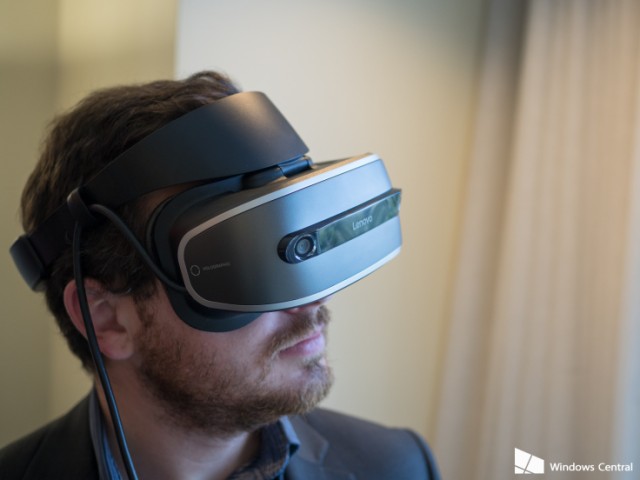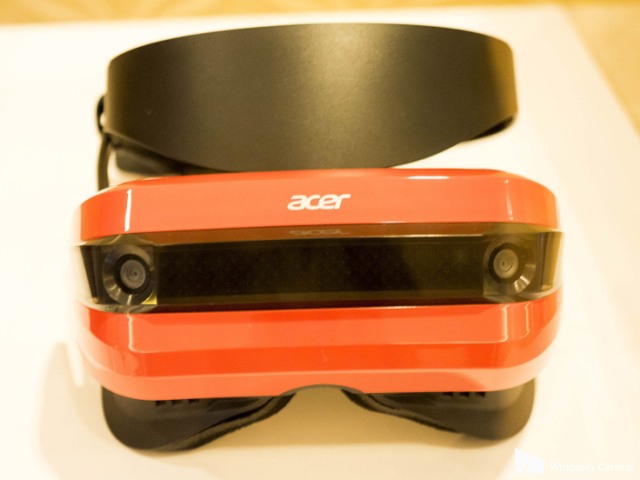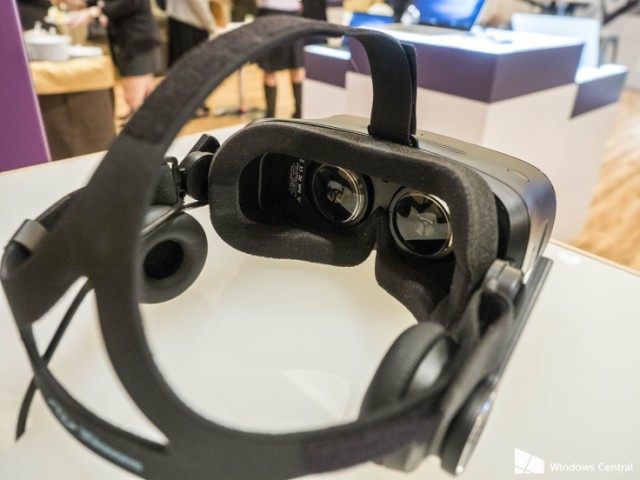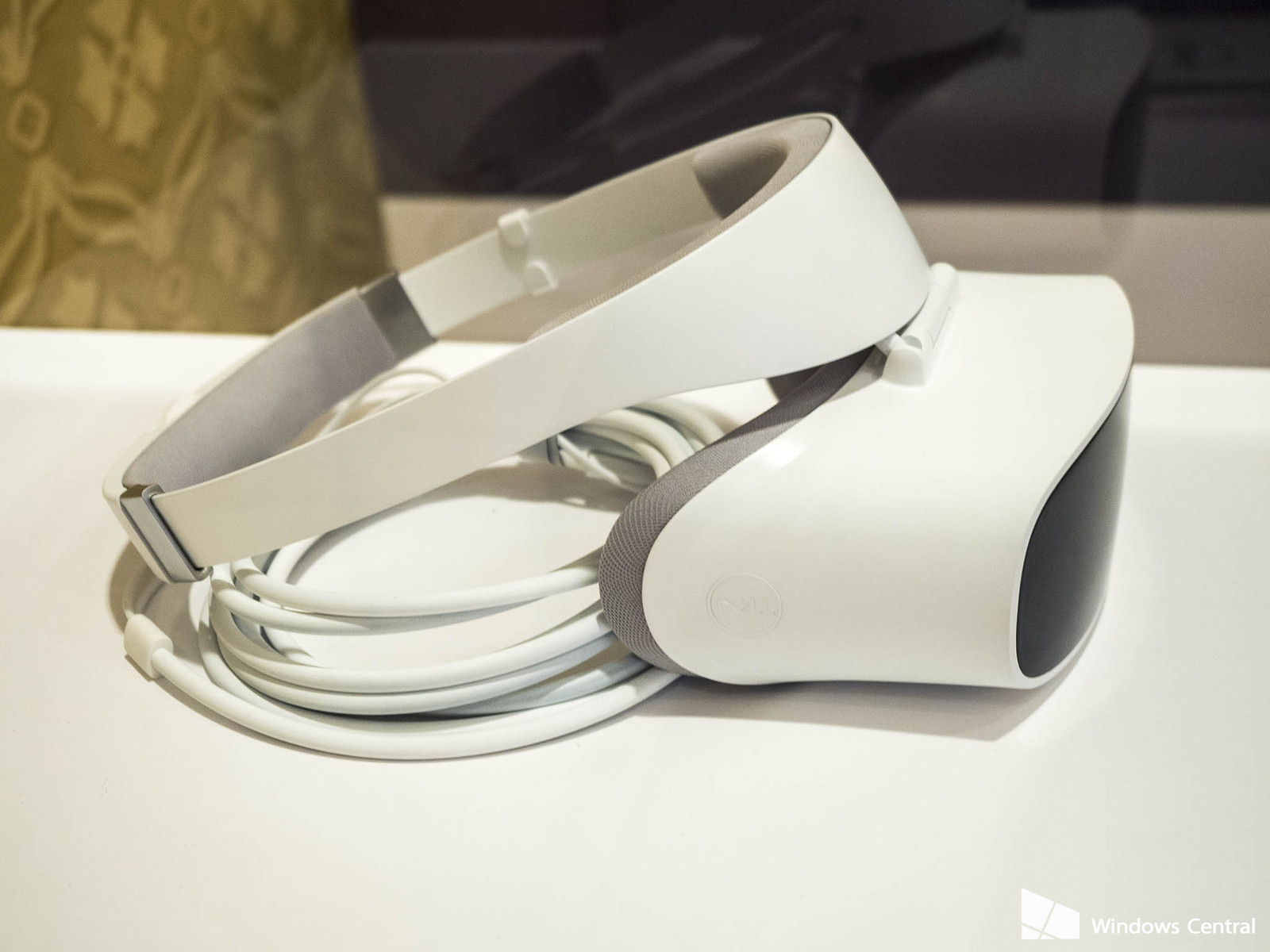How Microsoft is planning to rule AR and VR world
Microsoft is quite active on AR and VR field. About AR, that’s no secret that its HoloLens device is absolutely astonishing and works really well. I’ve tried it myself and I think that the stability of its “holograms” is incredible. In VR field, they recently announced that they will release cheap headsets for Windows 10, which they claim will be even better than Vive and Oculus.
Microsoft new headsets aren’t actually being made by Microsoft, but by a series of MS partners, like Dell, HP and Lenovo. Microsoft has given them some set of guidelines and provided them their awesome spatial tracking technology (the one from HoloLens) and then let them produce and sell them… and earn money from them. These guidelines mainly aim at having each headset to be compatible with Windows Holographic platform. Let’s all remember that these new Windows 10 HMDs will all be tethered and will all provide inside-out tracking, meaning that they don’t require any particular external camera or sensor, they just work out of the box, scanning the environment with cameras on the headset and reconstructing camera pose automatically. This means very user friendly devices… that avoid mess of playing with tracking stations and this kind of stuff. Microsoft aims at having headsets with a full range of prices: they want to lower the price tag of VR headsets, so that to have a more widespread adoption of VR.

You can read about the specs of these headsets here: it appears that they are good products, not at top-notch of current technology, but good enough to offer a good VR experience. If you’re asking yourself about how are current reviews…the answer is that we have no review, since no one has actually tried them, not even at CES. This makes me think that they’re still uncomplete products, but the fact that you can see photos of lots of them (like here), shows how they’re not complete vaporware. I’m very curious about them, since if they offer what they promise at that price, Windows10 headset can really disrupt the market.
All these headsets will be wired, but Microsoft is partnering with companies making standalone headsets, too. Do you remember the innovative Project Alloy headset by Intel? Well, its SDK will be exactly Windows Holographic, so this headset will be some kind of Windows 10 headset, too (the difference with the above ones is that Alloy employs proprietary technologies to scan the environment).
About augmented reality we all know HoloLens: it is an awesome augmented reality headset, maybe the best on the market at present time (Meta2 is cool, too… but it is tethered; Magic Leap is just vaporware for now). Microsoft has made a great work with it and even if it is still rough (augmented reality is way behind virtual reality, so we’ll need some years to have completely usable AR devices), when you try it, you understand that this is the future. What surprised me the most is that HoloLens is actually not a product: it is a set of guidelines, too. Microsoft has made the first one two years ago (in fact its hardware is becoming a bit outdated) but want its partners to make new and even more powerful ones.
What’s the point of all of these? Why all this interest of Microsoft about these new technologies? And why it is not creating headsets but just examples and guidelines? What’s the point of all of this?
The answer is very simple: they want to rule the world, again. Let’s all take a step back. Microsoft “created” the PC environment and all PCs were (and still are) running Windows (yes, I know… there is also Linux, but it is a niche; and there is also Apple. But 90% of sold personal computers are Windows PCs). Then smartphones came to light and mobile has become the next big platform in human-computing interaction. Microsoft lost completely this train: Windows Phone is only a niche and Android dominates the market. This has been a great pain for the Redmond company: it’s ruling the old-but-still-gold computing platform and has missed completely the new one. And predictions of all analysts are that mobile will outperform desktop (what do you use all day… a smartphone or a desktop PC that you carry with you on the bus?). When Nadella replaced Ballmer, Microsoft was slowly dying and he started lots of big changes, first of one was Microsoft going open source (.NET framework on git-hub… I think that not even the most talented magician would have forecasted this in the 90s) and focusing on selling services, like Azure. I guess that the great Indian guy do not want to repeat the same error that has been made for mobile: he wants to put Microsoft brand on the devices of the future. And what are the technologies that will change the way we will interact with electronic devices in the future? Yes, you’re right: AR and VR.

As Microsoft is not interested in us buying MS-made PCs, but it is interested in us buying a DELL PC with Windows 10, using Microsoft Office and Microsoft Edge, it is not interested in us buying a HoloLens, but in us buying a headset running Windows 10, using Office for AR and Edge browser in AR. Microsoft dreams in a future where all AR headsets are standalone and run Windows 10 and all VR headsets are connected to a Windows 10 PC. And with all these devices you also use apps and services made by Microsoft. What’s their plan to obtain this?
- Making Windows 10 to support all possible headsets (both AR and VR);
- Offering a Windows Holographic SDK to let developers developing once and then running their programs everywhere (the same program can run on PC, Vive headset and Microsoft HoloLens for example);
- Creating appealing programs already ready for AR and VR: it has already showcased Paint in AR, Edge browser in AR that is in 2D, but from which, for example, you can take furnitures from Amazon and place them into your real world to see how they fits inside your room.
- Partnering with all possible hardware manufacturers and software studios to create an incredibly rich ecosystem, with lots of Windows Holographic compatible headsets and applications.
In my opinion they have great chances to succeed. Windows has been the operating system introducing hardware abstraction, letting us developers to develop a game only once for all screens and sound blasters (do you remember old times where you launched a DOS game and you had to specify which was your screen and audio device? Pepperidge farm remembers!) and now it can become the one abstracting completely the AR and VR headset. No more SteamVR or Oculus plugin, you develop in Unity only for Windows Holographic and then bam! your game works everywhere, from Dell headsets to HoloLens. This is a huge advantage for us. And if you keep using Windows on your headsets, you just continue using the operating system you already know, so there is continuity even for the user.

Oculus and Vive are scared by Windows and they started partnering on a consortium to avoid being completely eaten by the Redmond company. Microsoft is really powerful and plans on rule on the *R world.
Do you think that they will succeed? What’s your opinion about this? Let me know in the comments… but before that, as always, please like and share this article!
(Header image by Windows Central)
Disclaimer: this blog contains advertisement and affiliate links to sustain itself. If you click on an affiliate link, I'll be very happy because I'll earn a small commission on your purchase. You can find my boring full disclosure here.



